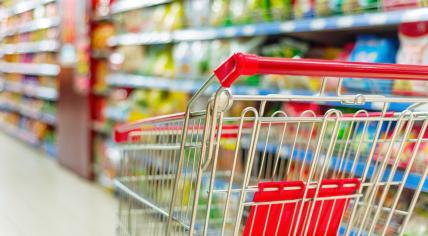
Food prices behind 9.6% inflation in April
Consumer goods and services were 9.6 percent more expensive in April than the same month last year. That makes inflation still very high but slightly lower than the 9.7 percent in March. Unlike in previous months, food prices were the driving force behind inflation in April, not energy prices, Statistics Netherlands (CBS) reported on Tuesday.
Foods were 8.5 percent more expensive in April than a year earlier, compared to 6.2 percent in March. The increasing prices pushed inflation higher. Meat, in particular, became more expensive, with a price increase of 10.5 percent compared to April last year. Vegetables, dairy products, and bread and grains also became more expensive.
The price development of energy had a depressing effect on inflation in April. "The annual price increase was smaller in April than in March," the stats office said. Energy was 136 percent more expensive in April than a year earlier, compared to 157 percent in March.
Motor fuels' price development also lowered inflation last month. Motor fuels were 24.8 percent more expensive in April than a year earlier, compared to 36.5 percent in March. The lower price increase is due to the Cabinet lowering excise duties on petrol and diesel effective April 1. Last month, motorists paid an average of 2.09 euros at the pump for a liter of Euro 95, compared to 2.29 euros in March. The diesel price dropped from 2.12 euros in March to 2.00 euros in April.
This is the second set of inflation figures CBS released for April. Every month, the stats office also publishes inflation figures calculated using the European harmonized method to make it easier to compare figures with other EU countries. Based on that method, Dutch inflation was 11.2 percent in April and 11.7 percent in March. Inflation in the eurozone increased from 7.4 percent in March to 7.5 percent in April.
